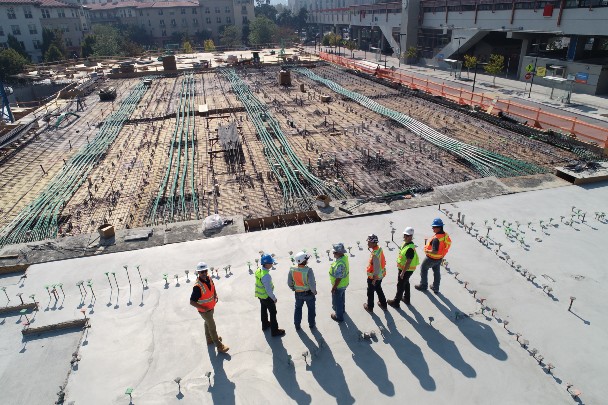November 21, 2023 Industry news
Building Information Modelling (BIM) has transformed the way we plan, design, and manage construction projects.
It is set to revolutionise the whole building and construction sectors and, as a global leader in BIM adoption, the UK is at the forefront of this revolution.
The push for BIM in the UK began in earnest with the government's 2011 construction strategy which aimed to improve efficiency, reduce costs, and cut waste across industry. Today, over 70 percent of UK construction professionals have implemented BIM software into their programmes.
BIM is essentially a digital representation of the physical and functional characteristics of a building or infrastructure that can be used in the design, construction, and operation of buildings and infrastructure. It allows multiple stakeholders such as architects, engineers, contractors and facility managers to work collaboratively on a shared digital platform, helping to reduce errors, improve coordination, and enhance overall project management.
The benefits of BIM
BIM is much more than a 3D design. It is a process that helps all those involved in the different stages of a building’s lifecycle manage and exchange data all the way from initial design through to demolition.

BIM integrates various types of data to create a detailed "digital twin" of a project.
This improves visibility, enhances decision-making, provides more sustainable building options and, when managed on cloud based platforms, allows information to be shared between different systems and stakeholders in real-time, supporting greater collaboration than ever before.
The benefits of BIM extend across the project lifecycle, from the initial planning stages where it combines real-world data to create accurate context models, through to design, construction, and operations.
During the design phase, BIM informs scheduling and logistics by ensuring consistent, easy access to detailed data, leading to more informed decision-making and thorough documentation. In the construction phase, BIM specifications guide fabrication and logistics are shared to ensure efficiency. Finally, in the operations phase, BIM data aids maintenance, renovation work and even the deconstruction of a building.
Building a digital future
BIM is critical to the future of construction, especially as the global population continues to grow, demanding smarter, more resilient building spaces. It enhances the efficiency of design and construction teams by enabling them to capture and utilise data throughout the entire construction process which can then inform any future operations and maintenance activities.
The benefits of adopting BIM are numerous. It fosters improved collaboration, reduces the need for rework and increases overall efficiency. It enables real-time coordination of design and construction, which helps to identify and resolve conflicts before they arise, saving both time and money.

BIM also supports facility management by providing invaluable insights that can support better maintenance over the course of a building's lifetime and aid in the creation of detailed models for prefabricated and modular construction, thus reducing waste.
BIM can also have a significant role to play in powering sustainability, allowing for the analysis and optimisation of a building's performance to reduce its environmental impact.
In essence, BIM represents a transformative shift in the construction industry, enabling a more integrated, efficient, and sustainable approach to building design and management.
The importance of information in BIM is paramount, as it is data that drives the accuracy, efficiency, and the collaborative potential that BIM is known for.
GS1 standards: maximising BIM's potential
In the realm of Building Information Modelling (BIM), GS1 standards and unique identifiers such as Global Trade Item Numbers (GTINs) are pivotal. They bring a new dimension of BIM efficiency by uniquely identifying products, enabling the capture and use of rich product data throughout the construction process. GTINs, encoded into scannable barcodes or RFID tags, offer consistent and accurate data for every building product at every stage of the supply chain, bolstering visibility, traceability and building trust in materials management.

Shervin Yousefzadeh, head of constrction, GS1 UK
The use of GS1 standards in BIM supports the Building Safety Act's requirement for a "golden thread" of information, ensuring a clear record of what materials are used, when, and where. This approach not only aids in planning and coordinating safety measures during construction but also ensures that buildings perform as expected post-construction, enabling effective management and swift action in identifying potential hazards.
By providing a full view of materials used, GS1 standards allow for the development of strategies focused safely maintaining, reusing, refurbishing, and recycling buildings and materials, creating safer, more efficient, transaparent sustainable supply chains.
Integrating these standards with BIM ensures that building information is rich, robust, and resilient, underpinning the digital transformation of the construction industry.



